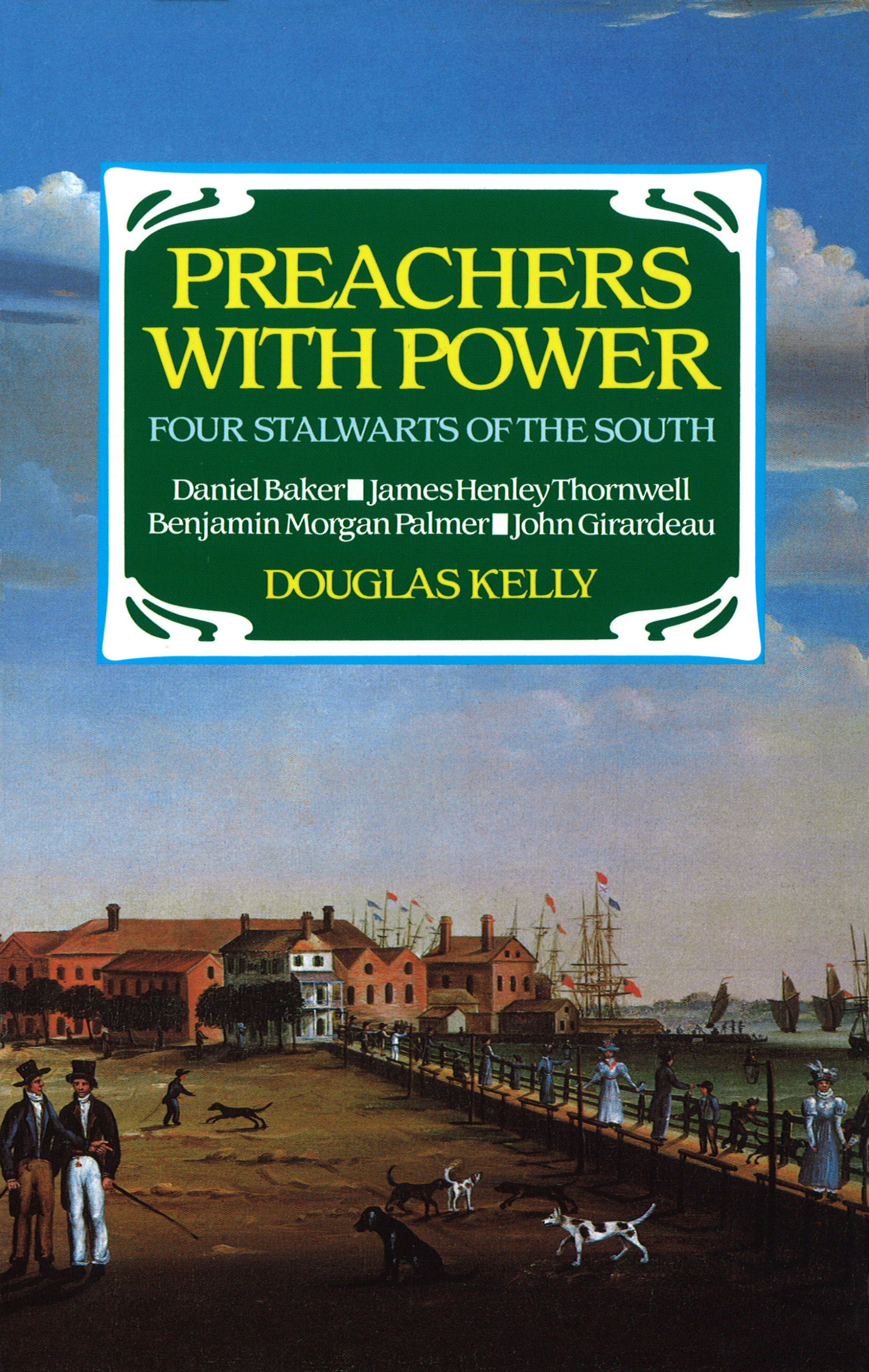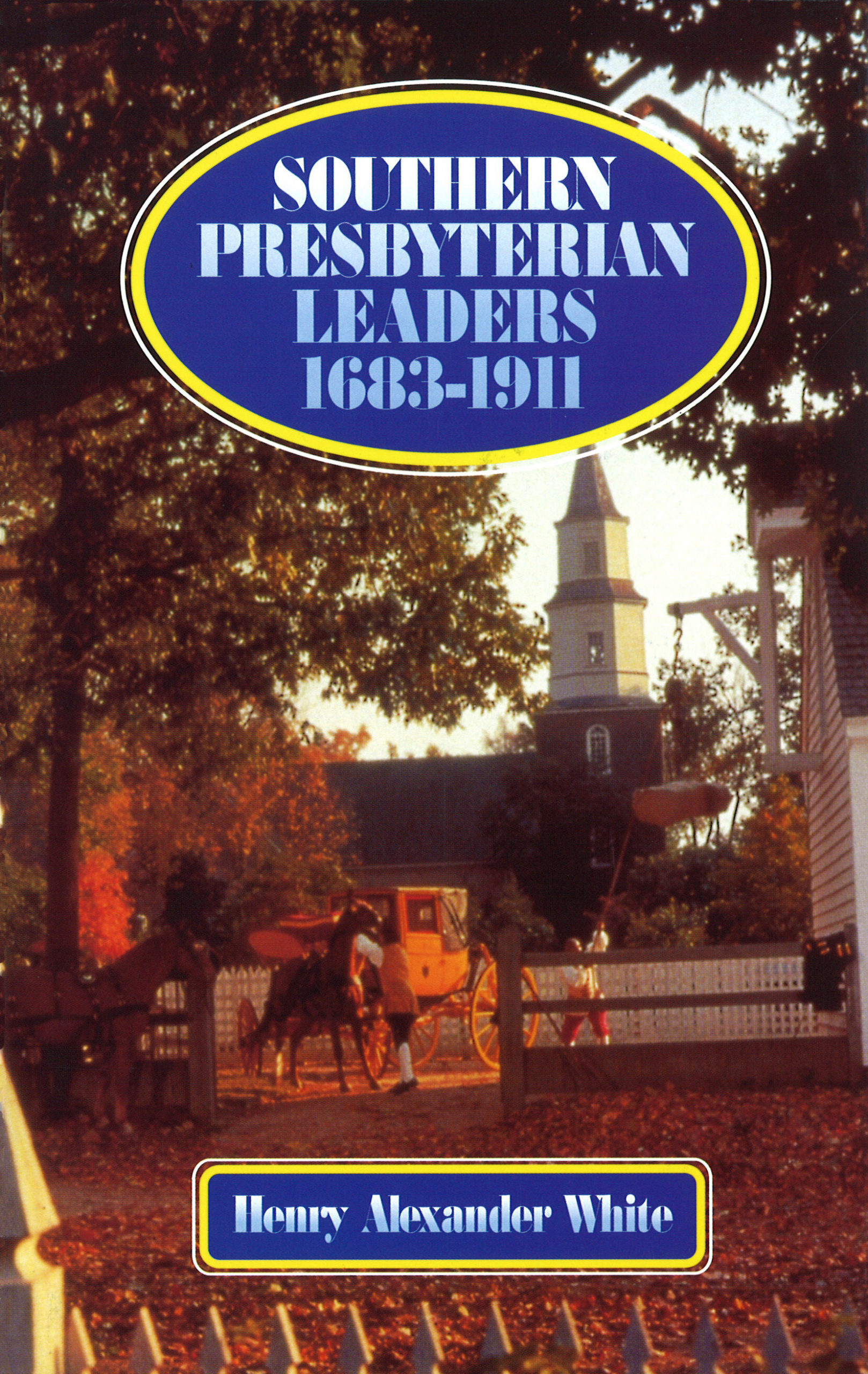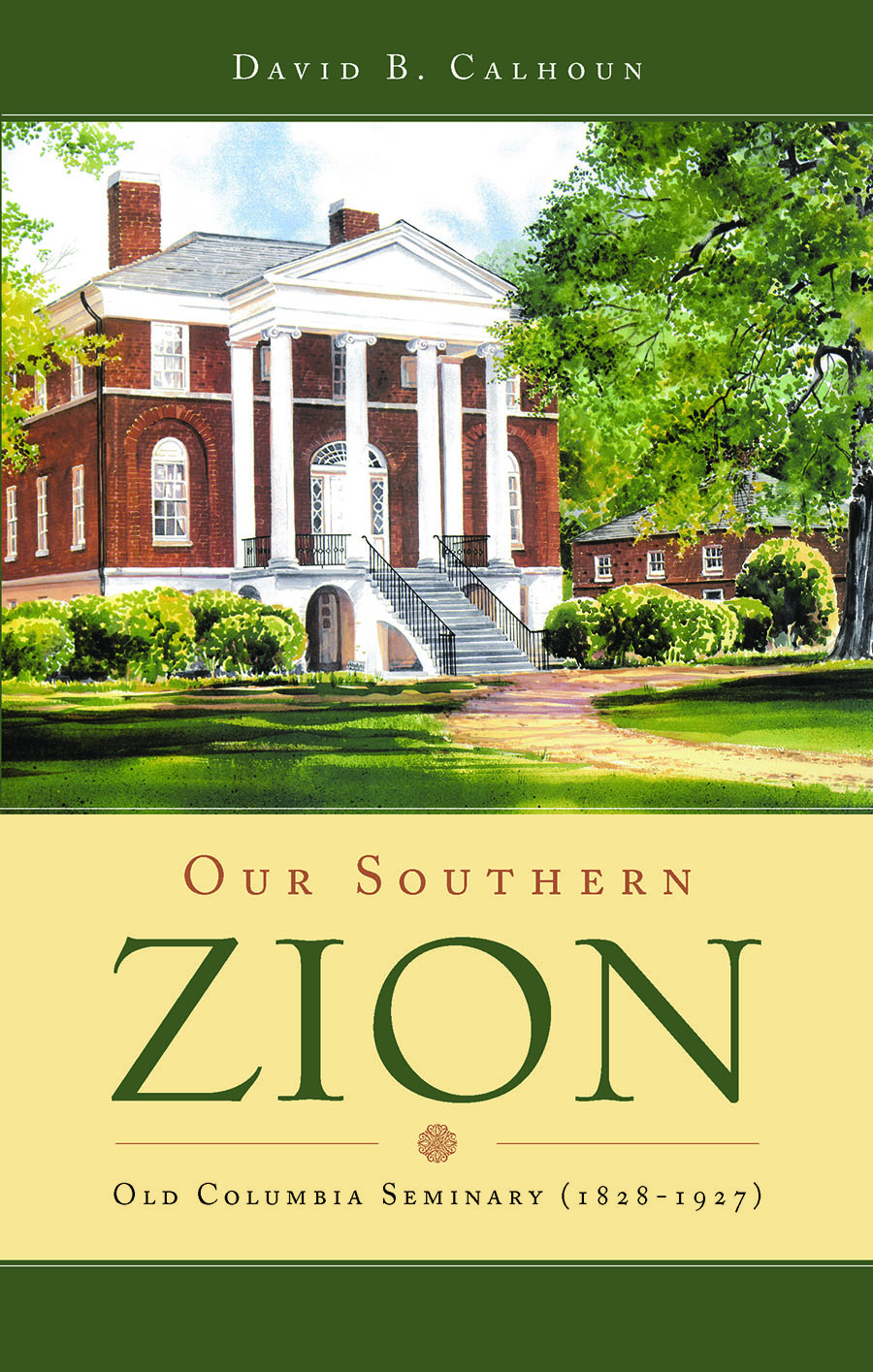John L. Girardeau, Minister to the Slaves of South Carolina
It is not difficult to appreciate the great strengths of the Southern Presbyterian Church in the early nineteenth century. It comprised of many solid, faithful congregations where the truths of the Bible were honoured and clearly taught; and where, from time to time, sudden bursts of religious awakening added large numbers of people to the churches. These were churches where commitment to sound theology and evangelical zeal were often found combined. That the Southern Presbyterians produced fine preachers, theologians, and churchmen who made important contributions to the body of Reformed understanding internationally is not surprising.
And yet – in this day and age, many of us are surprised at one major, glaring inconsistency in their witness. How could committed Christians live with the slavery that was so prevalent in the economy of the South? Surely it flew in the face of Christian compassion and the equality of sinners before God? Christians are called to help the poor and oppressed; but didn’t these Presbyterians involve themselves in oppression instead? What, if anything, did they do for the multitude of African slaves who served them, and who lived in their midst? The life of one of their ministers shows how some of them grappled with this moral dilemma, and attempted to do quite a lot.
Family and Childhood
John Lafayette Girardeau was born in 1825 on James Island, South Carolina. He was the son of parents of Huguenot background (South Carolina was one of the destinations to which French Huguenot refugees fled after the revocation of the Edict of Nantes1). His grandfather had served in the American Revolutionary War (hence the name Lafayette, after the French general who had assisted the American side). His father was a small-scale plantation owner who grew cotton; so young Girardeau grew up in close contact with slaves. His mother was a compassionate, sensitive lady who was the spiritual centre of the home; and the Girardeau home was one where Christ was spoken of naturally and often. Family devotions were the norm, the Lord’s Day was observed carefully, and the family were actively involved in their local Presbyterian church, including the weekly prayer meeting held in different family homes.
Mrs Girardeau was especially kind to sick and needy slaves. She would often care for them, and almost certainly passed her compassionate influence on to her son, giving him a deep interest in the black population of the Low Country (coastal region) of South Carolina. Sadly, she died when Girardeau was just a young boy, and his life was completely changed. Within the next two years his father remarried, he lost a close uncle and also his maternal grandmother. It seems his stepmother was not especially kind, and he was sent off to school in Charleston. He had lost a great deal of the security of his childhood. His attendance at Second Presbyterian Church in Charleston was one important anchor where he found kindness and friendship.
When he was fourteen or fifteen he went through some spiritual turmoil, recognised his need of salvation, and trusted in Christ. This set the direction of his life; and around this time he started at College. He loved it: academically able, he treated his studies in the liberal arts and the classical languages as preparation for a lifetime of ministerial service. He graduated in 1844 and spent the summer as tutor to the Hamlin family on their plantation eight miles from Charleston. One of the daughters would later become his wife. In 1845 he began study for the ministry at seminary in Columbia, where he frequently heard the preaching of James Henley Thornwell and Benjamin Palmer at First Presbyterian Church. Thornwell’s theological convictions and personal walk with Christ had a great influence on the young Girardeau. In his seminary years he was confirmed in solid, conservative Old School Presbyterianism and longing to see the kingdom of Christ extended through souls coming to the Saviour. He also busied himself doing what he could to bring the gospel to the poorer and more hardened sinners in Columbia at the time. As a student, Girardeau became known for his spiritual fervour and tender, ardent prayer. He also had the makings of a particularly fine preacher.
Ministry to the Slaves
Girardeau’s heart remained in the Low Country of South Carolina, though, where the black population, far more numerous than further inland, had fewer opportunities to hear the gospel, and where there was a great deal more ignorance and the practice of Voodoo. His first pastoral charge was at the Wilton church in rural Colleton County. He regularly preached to a large congregation of white people in the morning, and to blacks in the afternoon. He also systematically preached to the slaves on the surrounding plantations, often on the porches or inside the homes of their masters. He did not insult the intelligence of the slaves, and used the same order of service for both. He taught them good psalms and hymns, refusing the view that the slaves’ own simple chants were good enough for them. Girardeau clearly believed that the goal was to lift the blacks’ understanding, not leave them at a level of ignorance. Then he was called to a new work. Second Presbyterian Church had begun in Anson St. in Charleston for the slaves of the city. A building seating 600 had been built by the slaveholders and opened in 1850. Thornwell had preached on Colossians 4:1 at the opening service. By 1854, when Girardeau took up his ministry there, there were thirty-six members; and by 1860 there were over 600, with a regular Sunday attendance of 1500. This was an extraordinary ministry, obviously blessed by God in its fruitfulness; and it is helpful to consider some of the things that contributed to its success.
First among them is surely Girardeau’s preaching, which contemporaries described as delivered in a clear and gentle voice; but it was soul-searching and Christ-centred. It frequently affected congregations in a similar way to Whitefield’s preaching – many were grieved by their sin to the point of tears. The second major factor was the church’s thorough teaching programme, involving catechism instruction and Scripture memorising.
There was plenty of precedent for work among slaves in the South. Girardeau himself had a cousin, C. C. Jones,2 who was a leading evangelist of the slaves as well as a professor at Columbia Theological Seminary, and who had written a catechism to instruct black people, Religious Instruction of the Negroes in the United States, in 1842.
There was a genuine desire on the part of many Christian Southerners to teach the slaves the gospel. They were happy for their slaves to attend church, and for preachers to visit the slaves on their plantations. As has been pointed out, they provided money for the building of the Anson St. church – better accommodation than the stifling balconies the slaves occupied in regular white churches.
However, this all happened in an atmosphere of paternalism. The whites, even those most interested in the blacks like Girardeau, always viewed them as little brothers incapable of advancing to the spiritual maturity expected of white Christians. This unbiblical view led some (not Girardeau) to deny church leadership to black members. To us, such a view is unworthy of Christians who believe that sinners saved by Christ have equality before God. Yes, these Christians had big blind spots with regard to slavery – yet so do we, on other subjects.
The striking thing is that these Presbyterians persevered in their efforts to teach the slaves thoroughly – at a time when it was actually illegal to teach slaves to read and write. Fear of incendiary revolutionary ideas infiltrating from northern abolitionists had led to a dread of providing slaves access to such material through literacy. Girardeau’s efforts to preach the gospel and teach the catechism in this setting went some way to overcome the many handicaps slaves suffered in growing in their understanding of the Word of God. As C. C. Jones had argued, God, in his providence, had brought massive numbers of African people formerly ignorant of the gospel to the New World. It was the duty of white people, who had known so much spiritual blessing, to teach them the gospel.
Girardeau’s church had a substantial educational programme. Slaves were trained to memorize vast portions of Scripture, catechisms and psalms and hymns. Sabbath Schools (a feature of solid churches since the 1820s) were the main venue for this teaching. By 1857 the congregation had outgrown the Anson St. mission, and it was decided to build a huge new church on Calhoun St. on a piece of land donated for the purpose. It was the biggest church in Charleston, with seating for 2500. By choice of the black members, the name was ‘Zion’ church. There was considerable outreach among the community of black domestic slaves in Charleston, and the church continued to grow rapidly. New members were discipled in ‘classes’; each class having no more than 50 members, and the leaders were drawn from among the spiritually mature black men. The classes filled a number of functions – Christian fellowship, keeping the members and leaders informed of sickness and need, and furthering the members’ growth in Christian understanding and spiritual graces.
The work flourished. In 1858 there were 245 black communicant members; and by 1860 that had increased to 492. Since Girardeau preached three times every Sunday, attendance must have been far bigger than the total membership. It seems that church membership did not decline during the Civil War, either.
What the War Brought
However, the war did have a devastating effect on the South generally, and on the churches in particular. Tensions between the Northern states and the South in the period leading up to the war led most Protestant denominations, including the Presbyterians, to divide into northern and southern entities. Girardeau kept the members of Zion Church fully informed of developments in the Presbyterian Church, so they understood what was happening when their church split from their Northern brethren.
Soon, everyone was affected and nothing would be the same again. In 1862 Girardeau took leave of the church to serve as a chaplain in the Confederate Army, only returning in 1865 after having suffered defeat and imprisonment. Charleston was occupied by Northern forces and many public buildings, including Zion Church, were confiscated. The church trustees had to negotiate with the new authorities to recover the church building from a Northern missionary who had tried to take it over. Some black Christians felt unwilling to be under a white pastor in the new circumstances, though a large number wanted to return to Girardeau, and did so. It was a sad situation: many of the Southern whites were defensive and bitter; and the policy of the Freedman’s Bureau, set up by the Northern government, was to divide the now free black citizens from the Southern white populace. The Bureau strongly encouraged the blacks to leave the white churches and to form their own with the help of the Washington government. Over time, the blacks affiliated more and more with existing black denominations, developing their own leadership and forms of worship. Zion church was ultimately abandoned, and the building demolished.
After the War
In these circumstances Girardeau’s pre-war ministry was finished, and he served until the mid-1870s in a largely white congregation in Charleston. He never lost his lifelong zeal for the spiritual well-being of the blacks, and one of the Sabbath school groups his church operated was for black people. Girardeau’s gentle and godly character, preaching gifts, and scholarship were widely recognised by this time, though, and the 1874 General Assembly of the (Southern) Presbyterian Church elected him Moderator. It also elected him Professor of Didactic and Polemic Theology at Columbia Seminary, where he taught for twenty years until his retirement at the age of seventy.
Girardeau’s ministry shone as a beacon of hope in a culture undergoing cataclysmic change. Between the early 1850s, when his preaching ministry began, and the 1880s, when he finally retired from theological teaching, Southern society was revolutionised. White society, while largely Christian, had a huge moral blind spot in condoning slavery; and yet the closeness of master and slave allowed for considerable spiritual influence of the one upon the other for good – which Girardeau did all he could to encourage. He was even prepared, within the constraints of that setting, to devote his entire preaching ministry to the black people. When war and the victory of the Northern army destroyed slavery in the South, it also destroyed the close relations between black and white, resulting in a policy of separation. That Girardeau could face the ending of his ministry in such circumstances without bitterness of heart speaks highly of his character.
Such turns of events can be hard to bear. What happened to Zion Church bears resemblance to many situations in the history of the church. Wars and revolutions can wreak havoc on churches as people flee the violence, or take sides. We can wonder why God would allow this apparent crushing of his good work. Ultimately, though, we have to entrust what God has begun to his good hands. Sometimes, as in the book of Acts, he simply scatters his people so that they can take the gospel further. Other times, he allows his people to live out their faith in unexpected ways or circumstances. It is certainly true that the Southern Presbyterian churches did not die: they carried on as some of the more faithful churches in the U.S. into the next century, and formed the basis of what is now the largest faithful Presbyterian denomination, the Presbyterian Church in America. And while it is sad that many black people left behind the beginnings of solid reformational teaching that Girardeau and his like had been giving them, there are signs that more than a few black churches are hungering for this very thing today. As for Girardeau himself, he carried on preaching and teaching in the places he was able; trusting in the God he loved for the outcome. And we shall all rejoice together over the results in heaven.
Resources
I am greatly indebted to the following works for my understanding of Girardeau’s life and ministry:
C. N. Wilborn, John L. Girardeau (1825-98), Pastor to Slaves and Theologian of Causes: A Historical Account of the Life and Contributions of an often Neglected Southern Presbyterian Minister and Theologian (PhD dissertation, Westminster Theological Seminary, 2003).
Douglas Kelly, Preachers with Power: Four Stalwarts of the South – Daniel Baker, James Henley Thornwell, Benjamin Morgan Palmer, John Girardeau (Edinburgh: Banner of Truth, 1992).3
See also Henry Alexander White, Southern Presbyterian Leaders, 1683-1911 [Edinburgh: Banner of Truth, 2000],4 and David B. Calhoun, Our Southern Zion: Old Columbia Seminary (1828-1927) [Edinburgh: Banner of Truth, 2012].5
Notes
- The Edict of Nantes (1598) granted a large measure of religious liberty to Protestants in France, the Huguenots. It was revoked by Louis XIV in October 1685.
- See Chapter 6, ‘Charles and Mary Colcock Jones: Another View of the Old South’, in Iain H. Murray’s Heroes (Edinburgh: Banner of Truth, 2009).

Preachers With Power
Four Stalwarts of the South
price £12.00Description
It is not difficult to appreciate the great strengths of the Southern Presbyterian Church in the early nineteenth century. It comprised of many solid, faithful congregations where the truths of the Bible were honoured and clearly taught; and where, from time to time, sudden bursts of religious awakening added large numbers of people to the […]

Southern Presbyterian Leaders
1683 - 1911
price £13.50Description
It is not difficult to appreciate the great strengths of the Southern Presbyterian Church in the early nineteenth century. It comprised of many solid, faithful congregations where the truths of the Bible were honoured and clearly taught; and where, from time to time, sudden bursts of religious awakening added large numbers of people to the […]

Our Southern Zion
Old Columbia Seminary (1828-1927)
price From: £9.00Description
It is not difficult to appreciate the great strengths of the Southern Presbyterian Church in the early nineteenth century. It comprised of many solid, faithful congregations where the truths of the Bible were honoured and clearly taught; and where, from time to time, sudden bursts of religious awakening added large numbers of people to the […]
From the Presbyterians Week blog, 11 March 2015, at The Christian Observer.
Latest Articles
Biblical Mission Arises from Biblical Longing and Supplication 24 November 2025
This is the second of four posts from Peter Schild (translated by Michael T. Schmid) which together constitute his booklet The Church and Missions. ‘As they ministered to the Lord and fasted…’ — Acts 13:2 There is a real danger that a church becomes stagnant in self-satisfaction. The church at Antioch could have said, ‘We […]
Why Did the Pilgrims Really Go to America? 19 November 2025
On 21 November 1620[mfn]November 11, according to the Old Style calendar.[/mfn] the Mayflower made landfall in what is now Provincetown Harbour, Massachussetts. 37 of its 102 passengers were English ‘Pilgrims’ from the separatist church in Leiden, Holland. Their pioneering settlement of Plymouth Colony laid the foundations for the eventual formation of the United States of […]
